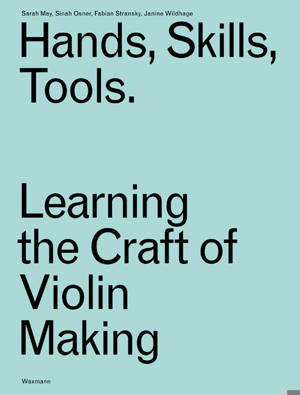
- Afhalen na 1 uur in een winkel met voorraad
- Gratis thuislevering in België vanaf € 30
- Ruim aanbod met 7 miljoen producten
- Afhalen na 1 uur in een winkel met voorraad
- Gratis thuislevering in België vanaf € 30
- Ruim aanbod met 7 miljoen producten
Zoeken
Hands, Skills, Tools
Learning the Craft of Violin Making
Sarah May, Sinah Osner, Fabian Stransky, Janine Wildhage
€ 37,45
+ 74 punten
Omschrijving
Violin makers are striving to create instruments of perfect sound and form. At this, they move between contradictive objectives: the canonized standards and one's own creativity. The violin making schools occupy a powerful position in this negotiation process - while their attitudes, practices and objectives differ substantially. Accordingly, it is necessary to answer the question comparatively: How is violin making taught and learned in European schools at present and how do they respond to technical and cultural changes?
This volume explores parallels and differences between learning and teaching in the violin making schools in different European countries. In order to realize this work, the cooperation of a violin maker, a cultural anthropologist and two photographers proves to be as necessary as fruitful, since the implicit knowledge of the craftsmanship needs to be understood on the levels of observation, experience and dialogue against a culture-analytical background.
This volume explores parallels and differences between learning and teaching in the violin making schools in different European countries. In order to realize this work, the cooperation of a violin maker, a cultural anthropologist and two photographers proves to be as necessary as fruitful, since the implicit knowledge of the craftsmanship needs to be understood on the levels of observation, experience and dialogue against a culture-analytical background.
Specificaties
Betrokkenen
- Auteur(s):
- Uitgeverij:
Inhoud
- Aantal bladzijden:
- 172
- Taal:
- Engels
- Reeks:
- Reeksnummer:
- nr. 9
Eigenschappen
- Productcode (EAN):
- 9783830945727
- Uitvoering:
- Hardcover
- Afmetingen:
- 19 mm x 10 mm
- Gewicht:
- 406 g

Alleen bij Standaard Boekhandel
+ 74 punten op je klantenkaart van Standaard Boekhandel
Beoordelingen
We publiceren alleen reviews die voldoen aan de voorwaarden voor reviews. Bekijk onze voorwaarden voor reviews.








